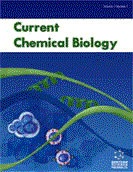Abstract
Background: Radioresistance remains a significant obstacle in the treatment of prostate cancer (PCa). The mechanisms underlying the radioresistance in PCa remained to be further investigated.
Methods: GSE53902 dataset was used in this study to identify radioresistance-related mRNAs. Protein-protein interaction (PPI) network was constructed based on STRING analysis. DAVID system was used to predict the potential roles of radioresistance-related mRNAs.
Results: We screened and re-annotated the GSE53902 dataset to identify radioresistance-related mRNAs. A total of 445 up-regulated and 1036 down-regulated mRNAs were identified in radioresistance PCa cells. Three key PPI networks consisting of 81 proteins were further constructed in PCa. Bioinformatics analysis revealed that these genes were involved in regulating MAP kinase activity, response to hypoxia, regulation of the apoptotic process, mitotic nuclear division, and regulation of mRNA stability. Moreover, we observed that radioresistance-related mRNAs, such as PRC1, RAD54L, PIK3R3, ASB2, FBXO32, LPAR1, RNF14, and UBA7, were dysregulated and correlated to the survival time in PCa.
Conclusion: We thought this study would be useful to understand the mechanisms underlying radioresistance of PCa and identify novel prognostic markers for PCa.
Keywords: Prostate cancer, radioresistance, biomarker, protein-protein interaction network, hypoxia, mRNA.
[http://dx.doi.org/10.1016/j.eururo.2018.08.010] [PMID: 30177290]
[http://dx.doi.org/10.1038/sj.onc.1209830] [PMID: 16909121]
[http://dx.doi.org/10.1016/j.urolonc.2011.10.008] [PMID: 22130126]
[http://dx.doi.org/10.1615/CritRevOncog.2018025946] [PMID: 29953367]
[http://dx.doi.org/10.1016/j.ejcb.2018.04.005] [PMID: 29773344]
[http://dx.doi.org/10.1590/1414-431x20187080] [PMID: 29694502]
[http://dx.doi.org/10.1186/s13046-018-0724-4] [PMID: 29530057]
[http://dx.doi.org/10.1002/pros.23817] [PMID: 31104332]
[http://dx.doi.org/10.1007/s00432-019-02917-z] [PMID: 31020420]
[http://dx.doi.org/10.1155/2019/4012590] [PMID: 30809541]
[http://dx.doi.org/10.1016/j.abb.2018.03.018] [PMID: 29559320]
[http://dx.doi.org/10.1002/cam4.1405] [PMID: 29573243]
[http://dx.doi.org/10.1158/0008-5472.CAN-14-1924] [PMID: 25670168]
[http://dx.doi.org/10.1016/j.nbd.2012.06.004] [PMID: 22709987]
[http://dx.doi.org/10.3322/caac.21595] [PMID: 31961947]
[http://dx.doi.org/10.1007/s00345-019-02640-x] [PMID: 30666400]
[http://dx.doi.org/10.1007/s11547-018-0966-4] [PMID: 30607868]
[http://dx.doi.org/10.1002/pros.23817]
[http://dx.doi.org/10.1016/S1470-2045(08)70073-1] [PMID: 18308254]
[http://dx.doi.org/10.1158/2159-8290.CD-13-0679] [PMID: 24203954]
[http://dx.doi.org/10.1038/ncb2008]
[http://dx.doi.org/10.1667/RR2679.1] [PMID: 22077337]
[http://dx.doi.org/10.1200/JCO.2005.04.4206] [PMID: 16520463]
[http://dx.doi.org/10.1158/1535-7163.MCT-14-0049] [PMID: 24837077]
[http://dx.doi.org/10.1038/onc.2016.479] [PMID: 28068319]






























